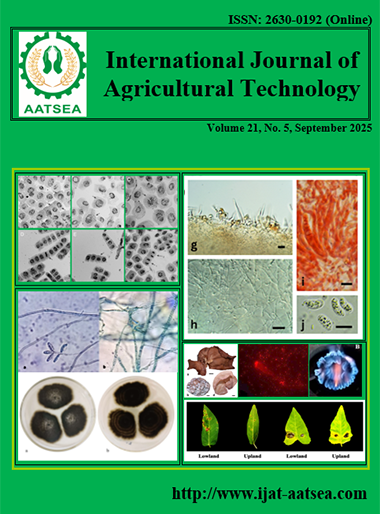Comparison of permeable and water holding capacity between flat and steep soils.
Main Article Content
Abstract
Permeability and water holding capacity are changes in land use type can lead to variations in soil water characteristics. Both soil characteristics are strongly related with other solusion such as the bulk density, soil porosity, and particle size characterized. Results showed that the soil porosity and soil holding capacity was higher at the flat than in the steeper sites, and there was not significantly differed between the latter two sites, the trend of porosity was similar to the holding capacity. From flat to steep lands, the soil physical properties in the 0-10 cm soil layer partially improved, bulk density, soil porosity and texture were significantly higher at the flat than at the steep sites. Soil texture, porosity and bulk density were found to be the key factors affecting soil porosity and water holding capacity. The results provided insight into the effects of vegetation restoration on local hydrological resources and can inform soil water management and land use planning on the regional.
Article Details

This work is licensed under a Creative Commons Attribution-NonCommercial-NoDerivatives 4.0 International License.
References
Ayuningtyas, E. A. (2023). Analysis of topsoil permeability in various land units in the Binuang sub-basin, South Kalimantan. J. Agriculture. Agrotechnology, 11:165-174.
Central Statistics Agency (2023). Indonesian palm oil statistics . 1st ed. Volume 16. Directorate of Food Crops, Horticulture and PD Statistics, Editor. Jakarta: BPS–Statistics Indonesia.
Ginting, S. V. and Afrianti, S. (2021). Groundwater quality in oil palm plantation areas and palm oil mills. Jurnal Pertanian Berkelanjutan, 9:65-75.
Lesmana, R., Valentina, R. and Cahyani, M. M. A. (2023). Physical characteristics of soil on cocoa fields in Metun sajau village, Tanjung Palas Timur sub-district, Bulungan physical district. J. Agricultural science. North Kalimantan. 1:1-05.
Margolang, R. D. and Sembiring, M. (2015). Characteristics of several physical, chemical, and biological properties of soil in organic farming systems. Joa, 2:717-723.
Melta, D. (2021). Study of physical properties of soil on oil palm land (Elaeis guineensis) based on different slope levels in Tanah Garam Village, Lubuk Sikar District, Solok City. Andalas University, Padang.
Saragih, Rahmawati, H. N. and Osly, P. J. (2020). Identification of slope gradient as a parameter of residential land suitability (case study: bogor city). Journal Spektran. 11:163-172.
Rahmawati, Y., Mahakam Lesmono Aji, I., Permata Sari, D., Mataram, K. and Tenggara Barat N. (2024). Relationship between soil moisture content and soil texture on infiltration rate and capacity in green open space (RTH) of Mataram University, 14:56-69.
Sari, A. S., Prasetyadi, C. and Erosion, D. (2020). Analysis of soil erosion rate and hydrology on ex-mining land in ponjong sub-district, gunungkidul district, yogyakarta province. Pros. Tpt xxix perhapi, 883-892.
Siahaan, R. C. and Kusuma, Z. (2021). Characteristics of soil physical properties and organic c on different land uses in the ub forest area. Jurnal Soil and Land Resources, 8:395-405.
Suryani, I., Juni, A. and Nurul, M. (2022). Study of physical and chemical properties of Inceptsols on various slopes and soil depths in cocoa plantation area. Jurnal Galung Tropika, 11:275-282.
Syofiani, R,, Diana Putri, S. and Karjunita, N. (2020). Characteristics of soil properties as a determining factor for agricultural potential in the Silokek village, a national geopark area. Jurnal Agrium, 17.
Tuba, S. E. and Monde, A. (2021). Physical characteristics of soil on various slope steepnesses in corn plantations (zea mays) in Borone village, Ampana Tete sub-district, Tojo Una-una district. Journal Agrotechbis. 9:934-942.
Umin, M. and JP Anasaga, A. (2019). Characteristics of physical properties of soil on cassava (Manihot esculenta crantz) cultivation land in Wologai Tengah Village. Journal Agrica, 12:23-33.


